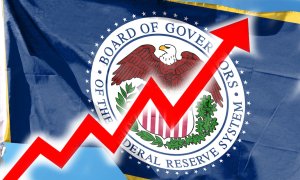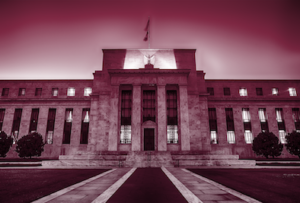A recent piece by Lawrence Summers and Anna Stansbury titled “Whither Central Banking?” in Project Syndicate comes as a breath of fresh air in the evolving world of central banking. Since the 1990s, there emerged from the ashes of old-line monetarism (with the Friedmanite belief in the control of monetary aggregates to stabilize an economy) a new framework whose key feature was an understanding that all that central banks could really do effectively is to control interest rates through setting the target rate in the inter-bank market for funds within the clearing and settlement system.
The new framework was inspired by Wicksellian ideas about interest rate setting that quickly spread almost universally throughout central banks internationally, as the latter redefined their mandate in favor of a single objective, usually a 2 percent inflation target. In this new framework, the only concern of central banks was to assure that, through the control of the overnight interbank rate, an inflation target can be easily achieved. The art of central banking was reduced to hovering up the central bank rate whenever the inflation rate began to inch up above the 2 percent target rate and to reduce the rate when the inflation rate went below target.
Either implicitly or explicitly in this monetary policy framework, there was the view that, while central banks can effectively control both nominal and real interest rates à la Taylor Rule-type reaction functions, the underlying “natural” or “neutral” real rate was a parameter determined outside of central bank actions, by the forces of economy-wide “productivity and thrift.” Hence, in the original Taylor Rule, for instance, it was implicitly assumed that this natural rate was a 2 percent real rate. The theory behind this concept of the natural rate vis-à-vis the money rate, often referred to as the loanable funds theory of interest rates, was a very simple one: there exists some underlying real rate that is somehow determined outside of the monetary system within the market for loanable funds through the investment/saving mechanism. As long as these forces of productivity (affecting investment demand) and thrift (affecting the supply of available savings) remain unchanged, the underlying real rate would also remain stable, in which case the role of the central bank was to adjust its administered rate to track the direction of the inflation rate. Moreover, in this case, fiscal policy actions could only be destabilizing, since deficit spending by the state can only put upward pressure on this underlying real rate and thus, eventually, the central bank rate in order to maintain the inflation rate within its target range.
The global financial crisis shook up this policy system. As a discretionary monetary policy reaction to the collapse of the real economy and the slowdown in inflation by 2009, central banks dramatically slashed nominal and real rates of interest in an attempt to stabilize both the inflation rate and the real economy.
The problem, of course, was that there was believed to exist a lower bound in setting nominal interest rates. Consequently, for the first time, there appeared a new “fiscalist” perspective espousing the need to pursue temporary discretionary fiscal policy actions because central banks were now constrained by the zero lower bound. Indeed, if the underlying natural rate had, for some reason during the global financial crisis, collapsed to a negative value, then monetary policy could no longer be effective, since central banks could raise rates but could not reduce them any further after reaching the zero lower bound.
Actually, there were policy attempts to puncture through the zero interest rate floor as in the Eurozone, where, instead of remunerating banks on their daily positive settlement balances, in 2014 the European Central Bank began to charge a mild negative interest rate of -0.1 percent. Other examples are to be found in Sweden and Japan. This quasi-Gesellian policy was based on the mistaken belief that these banks with positive settlement balances would try to rid themselves of their excess liquidity by lending these funds to creditworthy borrowers. However, just like the policy of quantitative easing (QE) itself, these were simply desperate measures based on an erroneous supply-side logic of bank behavior. In reality, we would argue that this changes nothing to the actual logic of the monetary policy system, since a negative rate on positive settlement balances merely shifts the nominal interest rate floor from zero to -0.1 percent.
Whether a zero or a negative lower bound, this doctrine became the new policy framework consistent with the loanable funds theoretical construct. The cause of economic stagnation was now the rigidity of both nominal and real rates of interest, thereby preventing the economy from going back to its natural rate of output growth. Rigidities in interest rates by then had replaced the former presumed culprit of low activity: rigidity in nominal and real wages.
Lawrence Summers became an important advocate of this view. In a speech at the International Monetary Fund in November 2013 and elsewhere, Summers (2013, 2014) sought to explain the new reality of secular stagnation within this broad framework of the loanable funds theory, whereby monetary policy had become incapacitated and required fiscal stimulus. At the time, however, he still sought to explain this new normalcy of secular stagnation in terms of interest rate rigidity.
Now, however, he seems to have abandoned that view altogether and has embraced Keynesian and post-Keynesian ideas originating with the General Theory. For instance, nowhere in the article by Summers and Stansbury is there mention of the negative natural rate as the explanation for an incapacity of central bankers to deal with secular stagnation. Is that because he has now abandoned the loanable funds theory, which remains at the core of mainstream thinking and to which he had previously subscribed? Nor do he and his coauthor suggest now that activist fiscal policy to combat secular stagnation is needed as a temporary measure to kick-start an economy stuck in a liquidity trap.
For Summers and Stansbury (2019), activist fiscal policy has become a permanent tool needed by governments to offset the forces of secular stagnation. For this, we applaud them for grasping what Keynes had long understood over 80 years ago in the General Theory, where he opted for long-term fiscal policy actions to combat tendencies towards secular stagnation, sometimes referred to as the “socialization of investment,” with an emphasis on long-term public investment goals. While they have not offered much detail on this long-term view of fiscal policy, we very much believe that Summers and Stansbury are moving in the right direction of abandoning discretionary monetary policy as the favored policy instrument to combat long-term stagnation. Also what seems to be clear to us is that the economics profession must break away from these outmoded theories of loanable funds and the natural rate of interest in order to be able to pursue policies that will take Western industrial economies back to an era of full employment that was a characteristic feature of the early post-WWII era.
References:
Summers. L.H. (2013) “Transcript of Larry Summers Speech at the IMF Economic Forum, November 8, 2013”, https://www.facebook.com/notes/randy-fellmy/transcript-of-larry-summers-speech-at-the-imf-economic-forum-nov-8-2013/585630634864563/
Summers, L.H. (2014), “U.S. Economic Prospects: Secular Stagnation, Hysteresis, and the Zero Lower Bound”, Business Economics, Vol. 49, no. 2, pp. 65-73.
Summers, L.H., and A. Stansbury (2019), “Whither Central Banking?”, Project Syndicate, (August 23), https://www.project-syndicate.org/commentary/central-bankers-in-jackson-hole-should-admit-impotence-by-lawrence-h-summers-and-anna-stansbury-2-2019-08







